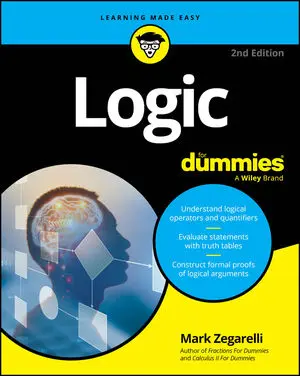- Figure out what we know to be true.
- Spend some time thinking about it.
- Determine the best course of action.
In logical terms, this three-step process involves building a logical argument. An argument contains a set of premises at the beginning and a conclusion at the end. In many cases, the premises and the conclusion will be linked by a series of intermediate steps. In the following sections, these steps are discussed in the order that you're likely to encounter them.
Generating premises
The premises are the facts of the matter: the statements that you know (or strongly believe) to be true. In many situations, writing down a set of premises is a great first step to problem solving.For example, suppose you're a school board member trying to decide whether to endorse the construction of a new school that would open in September. Everyone is very excited about the project, but you make some phone calls and piece together your facts, or premises.
Premises:
- The funds for the project won't be available until March.
- The construction company won't begin work until they receive payment.
- The entire project will take at least eight months to complete.
Bridging the gap with intermediate steps
Sometimes an argument is just a set of premises followed by a conclusion. In many cases, however, an argument also includes intermediate steps that show how the premises lead incrementally to that conclusion.Using the school construction example from the previous section, you may want to spell things out like this:
According to the premises, we won't be able to pay the construction company until March, so they won't be done until at least eight months later, which is November. But, school begins in September. Therefore. . .
The word therefore indicates a conclusion and is the beginning of the final step.
Forming a conclusion
The conclusion is the outcome of your argument. If you've written the intermediate steps in a clear progression, the conclusion should be fairly obvious. For the school construction example, here it is:Conclusion:
The building won't be complete before school begins.
If the conclusion isn't obvious or doesn't make sense, something may be wrong with your argument. In some cases, an argument may not be valid. In others, you may have missing premises that you'll need to add.
Deciding if the argument is valid
After you've built an argument, you need to be able to decide if it's valid, which is to say if it's a good argument.To test an argument's validity, assume that all of the premises are true and then see if the conclusion follows automatically from them. If the conclusion automatically follows, you know it's a valid argument. If not, the argument is invalid.
Understanding enthymemes
The school construction example argument may seem valid, but you also may have a few doubts. For example, if another source of funding became available, the construction company may start earlier and perhaps finish by September. Thus, the argument has a hidden premise called an enthymeme (pronounced EN-thi-meem), as follows:There is no other source of funds for the project.
Logical arguments about real-world situations (in contrast to mathematical or scientific arguments) almost always have enthymemes. So, the clearer you become about the enthymemes hidden in an argument, the better chance you have of making sure your argument is valid.





